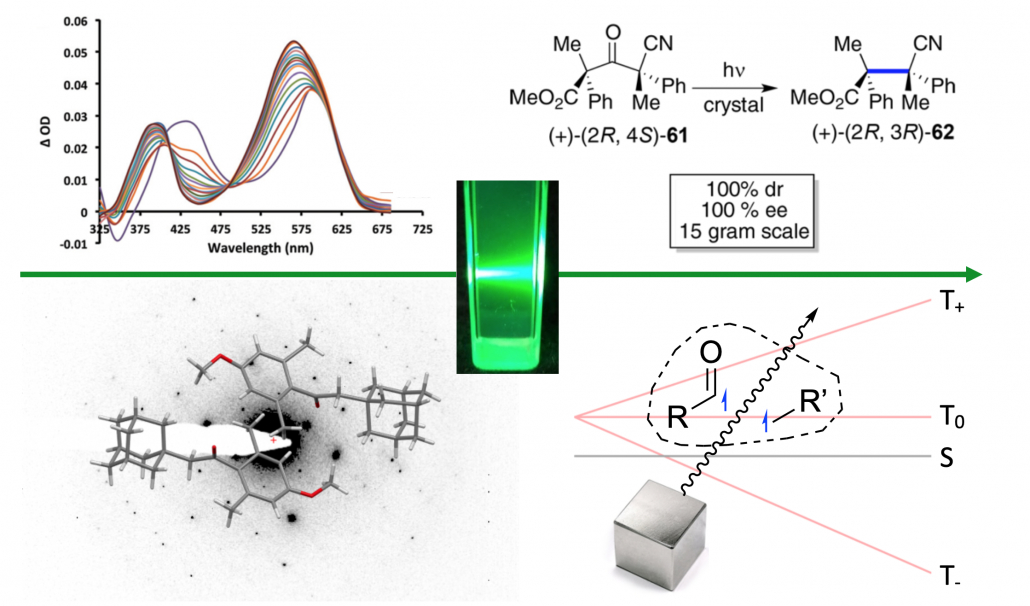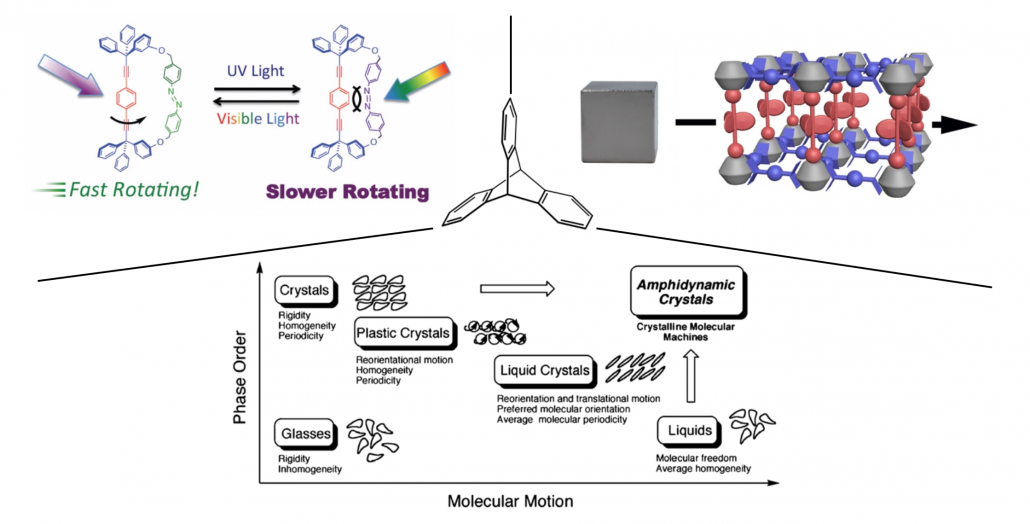Solid-State Photochemistry

Our group has developed and optimized methods to produce nanocrystalline suspensions, which are heterogenous mixtures of crystals with a size distribution in the submicron regime suspended in a solvent, most commonly water. Our current focus involves leveraging the unique properties of nanocrystalline suspensions for a variety of purposes. Ongoing avenues of research include the determination of absolute kinetics of solid state photochemical reactions and deployment of the solid state Norrish Type I photodecarbonylation reaction in the synthesis of sterically congested C-C bonds. We are also engaged in applying nanocrystalline suspensions in new contexts. The study of magnetic field effects on triplet biradical reaction intermediates in the solid state represents an entirely unexplored area of photochemical mechanistic investigation. In addition, microelectron diffraction (MicroED) shows promise for direct crystal structure and polymorph determination from nanocrystalline suspensions, and possibly for probing the nature of topotactic photochemical reactions in unprecedented detail.
Molecular Machines

The concept of molecular machines has fascinated chemists for decades, and much progress has been made in miniaturizing many mechanical devices to the smallest possible length scale. Our study of molecular rotors, a subset of molecular machines, has yielded analogs to macroscopic machines such as the molecular brake. The crystalline solids formed from these types of molecules are termed amphidynamic crystals. Many potential applications for such systems rely on the ability of the individual rotors to act in concert or in hierarchical fashion in order to display emergent properties. For this reason, we again utilize the properties of the crystalline solid state to impart long-range order to individual rotor units. Current investigations involving the incorporation of a variety of molecular rotors into metal organic frameworks (MOFs) aim to create novel materials in which the rotors exhibit correlated motion, dipolar interactions, or collective response to an externally applied stimulus such as a magnetic field.
